
Armenia
Chapter one
One day in Yerevan.
I arrive in Yerevan in the wee hours of the morning. After collecting my bags I take a taxi to my apartment in the center of the city. The streets are quiet, empty.
I’m tired, having had little to no sleep on the flight from Warsaw. There wasn’t quite enough time.
Arriving at the building, I confuse the entrance and try the code a number of times at the wrong door before I reread the directions. The door isn’t on the corner, it’s down the street.
Even after finding the right door, I find it difficult to operate the keypad that unlocks the door. The instructions tell me that it’s sensitive, but I’m not sure exactly what that means. The password digits are well-worn, and I try varying degrees of pressure to unlock the door before getting it right. It’s a week before I crack the code.
The apartment sits a few blocks from the palace overlooking a leafy street. A small balcony opens up over the avenue, letting outdoors in. It’s an older building, the room exhudes old-world charm.
I take a shower and climb into bed, eager to catch up on sleep.
•
I wake up eager for breakfast. I google a destination and set out from the apartment, ready for my first taste of the city.
I walk northwest to cut through Missak Manouchian Park en route to a coffee shop on a posh block of Pushkin Street before deciding to zig zag my way to an outpost of Yerevan Bakery just outside the eastern boundary of Old Yerevan.
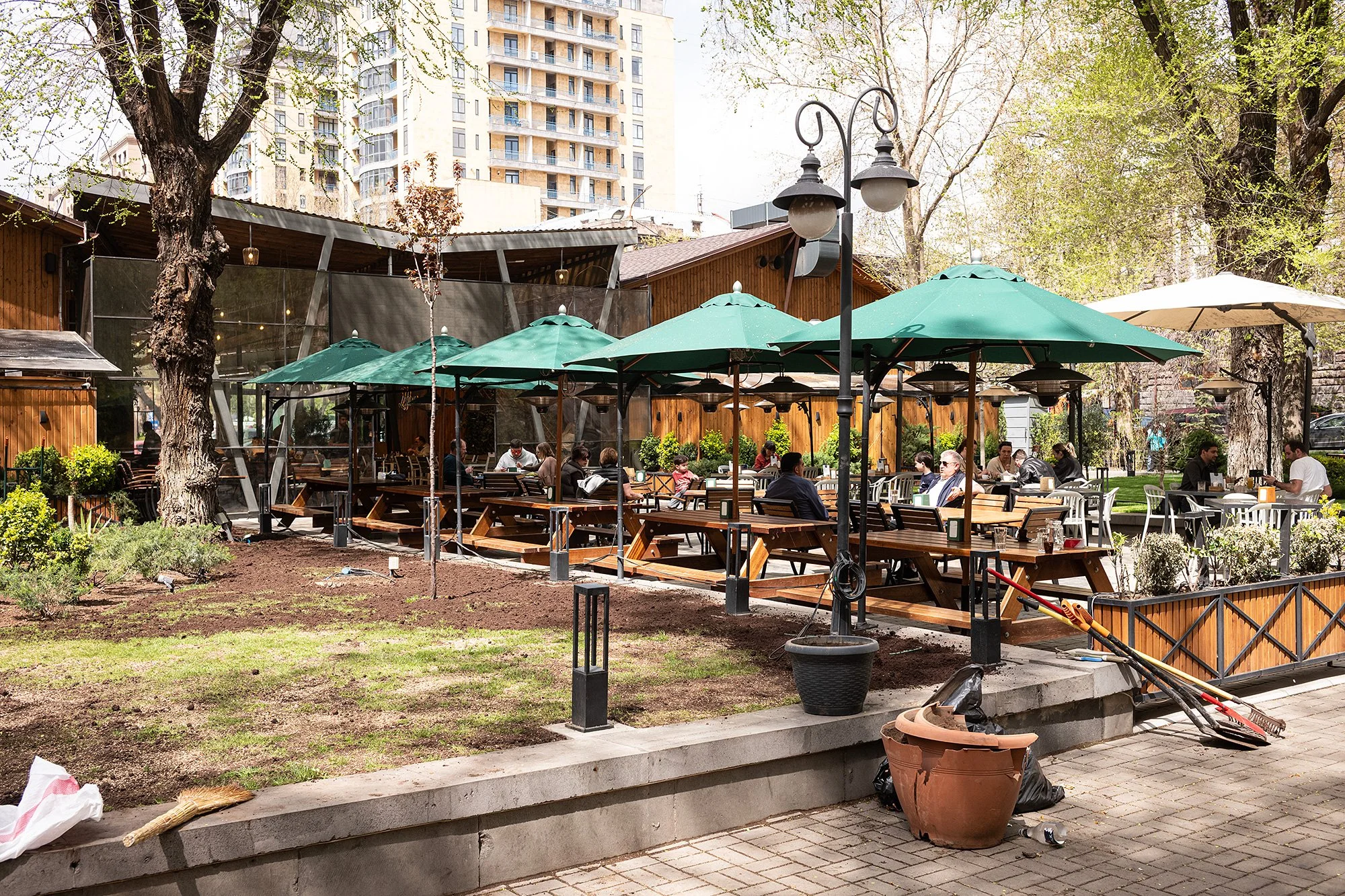


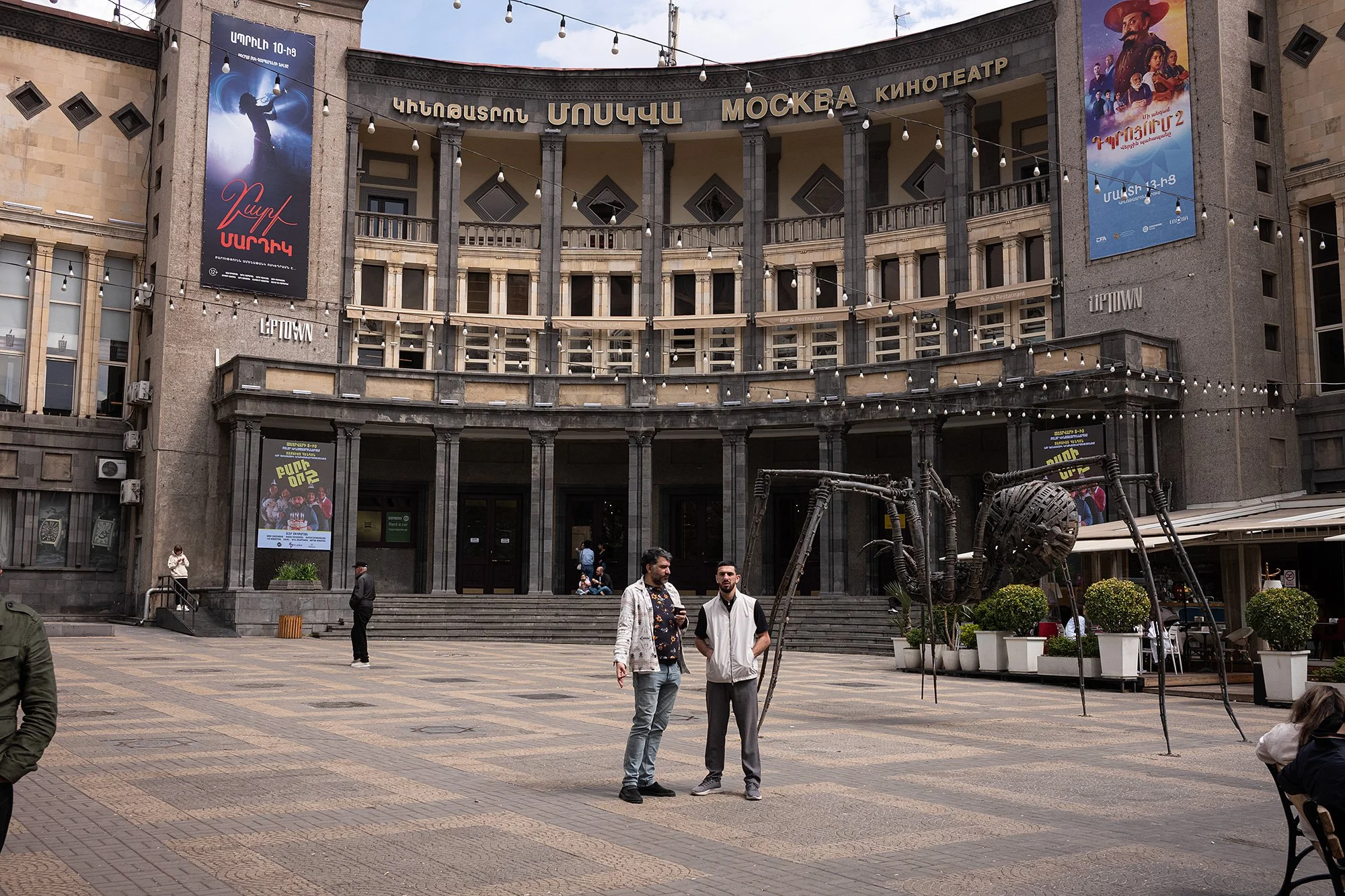
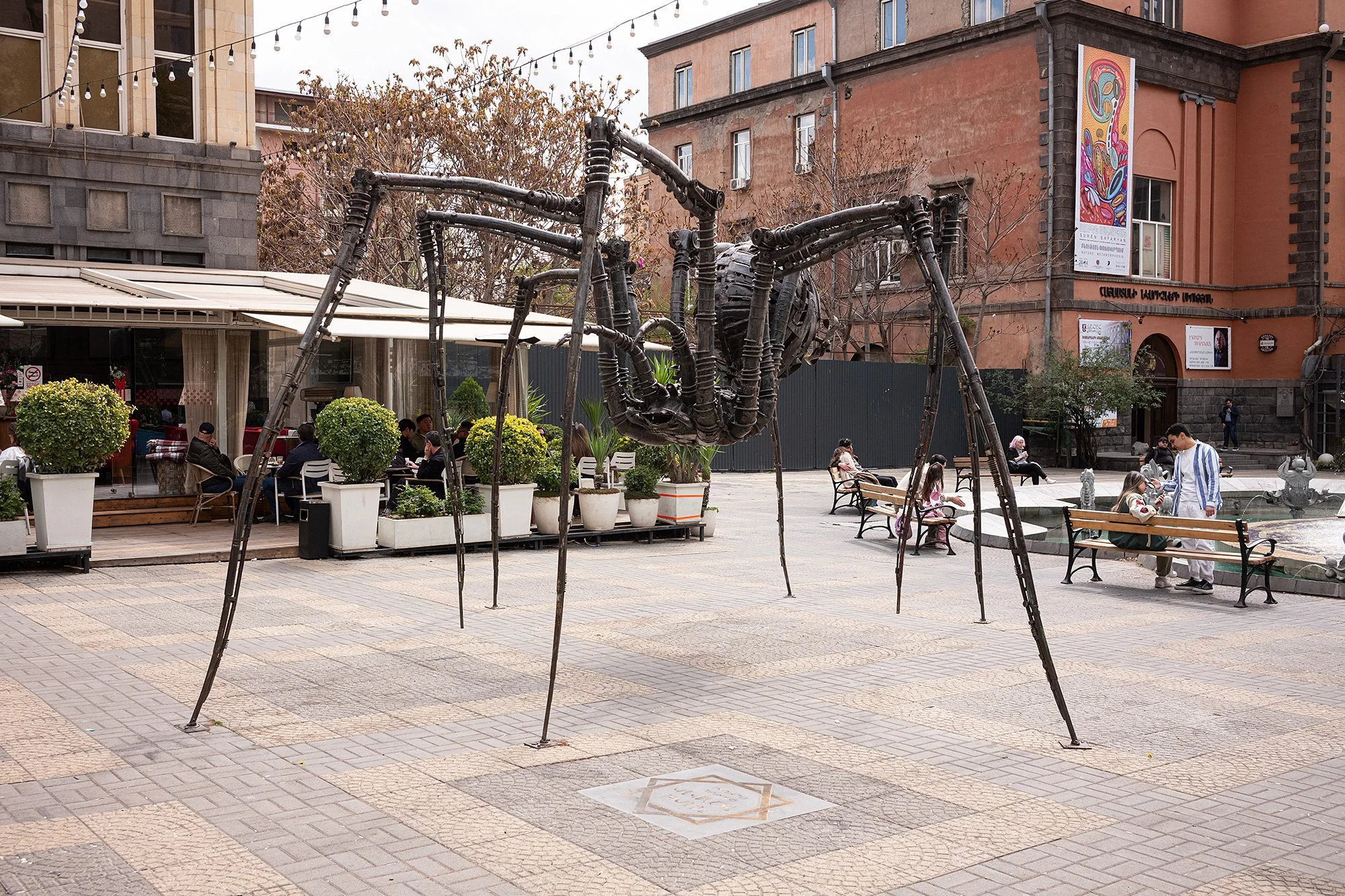

I sit outside, a couple before me, a lone man under the awning on the sidewalk. I order eggs benedict with salmon on an english muffin and coffee and then have a pistachio croissant while I debate what to do with the rest of my day.

I had intended to ease in to my stay, walk home, go food shopping, but after looking at the map I decide to visit a nearby church and then see where the day takes me.
I pay my bill and head northwest. The streets are in a grid, but diamond-shaped, tilted 45° off of their cardinal directions. I am soon before the Holy Mother of God Catholic Church, the city’s oldest surviving Catholic church. It’s the fifth Sunday of Lent and crowds spill out of the church. I think I’ve arrived just after service and keep to the edges.



From the church I continue my walk around the center of the city, passing the Arno Babajanyan Statue honoring the composer and pianist, and then continuing on past Swan Lake towards the Armenian National Opera and Ballet Theatre. Sadly, I won’t have time to attend a performance, and I make a mental note to make sure I allow time on my next visit to Yerevan.



Skirting the theater I walk through Martiros Saryan Park, pausing to take in the art fair that has sprung up for the weekend before continuing on to the Cafesjian Sculpture Garden.
A statue of the architect Alexander Tamanian marks the entrance to the park and children clamber over it, playing a form of hide and seek within the folds of his robe and the shadows.
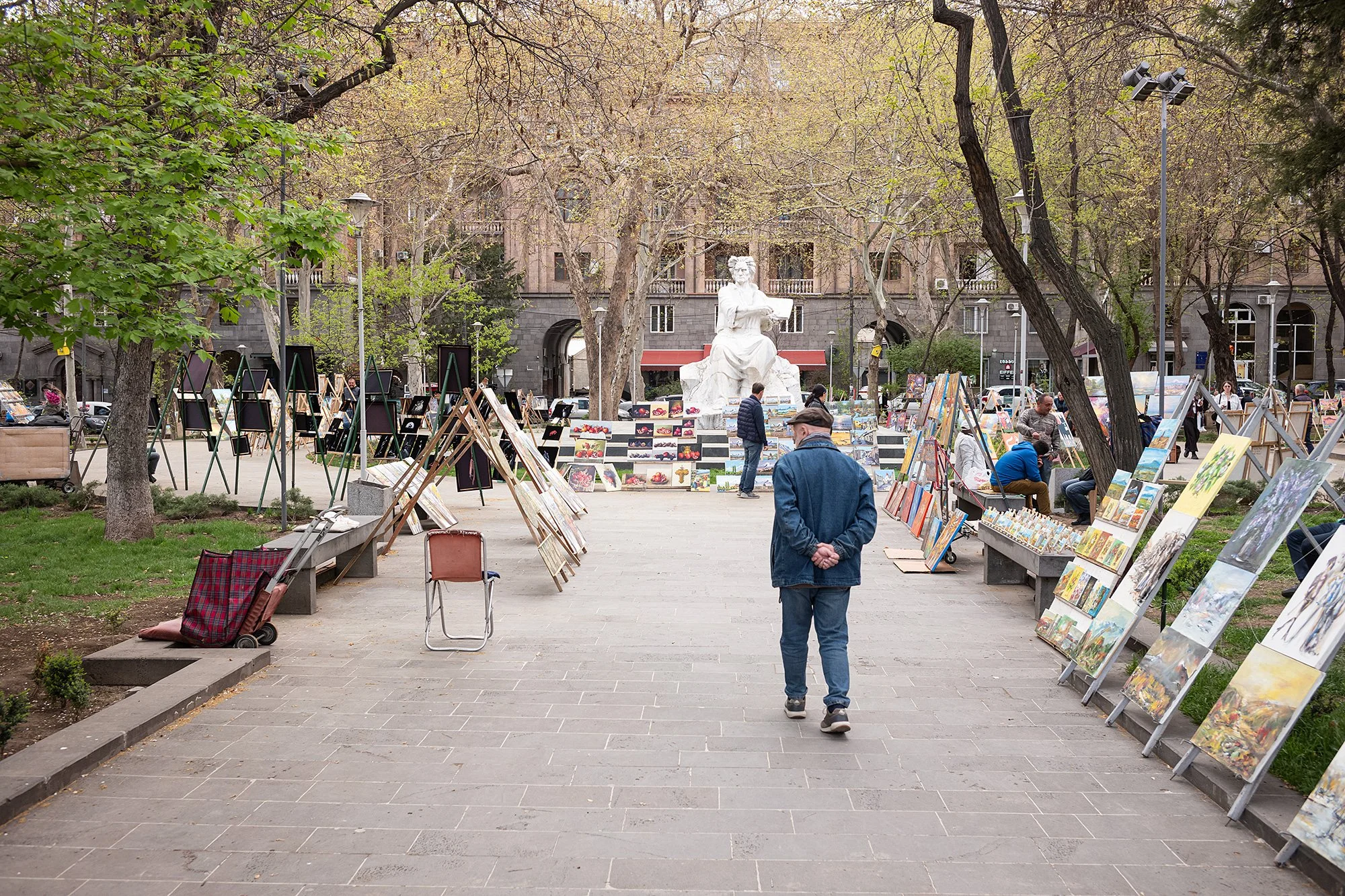

I walk through the sculpture garden, admiring works by Fernando Botero, Peter Woytuk, Yue Minjun, Saraj Guha, and others. Crowds of people mill about, walking amongst the works of art, enjoying an intermittently sunny Sunday afternoon.

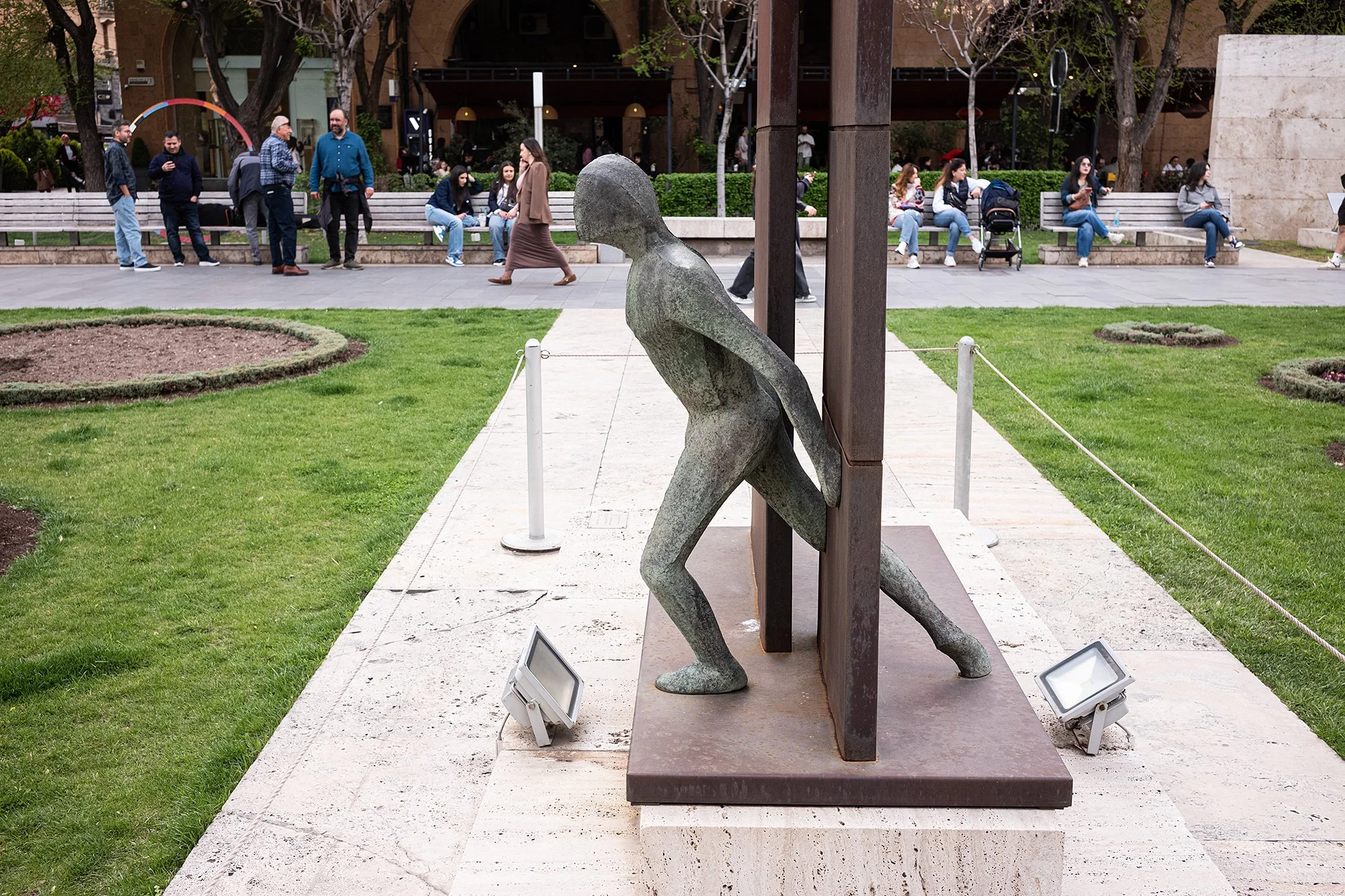

At the end of the garden I look up at the Memorial To 50th Anniversary Of October Revolution looming atop the Cascade Complex, a series of stairs and gardens and fountains set into the hill overlooking the city. I pause for a moment before taking a deep breath and beginning my ascent.
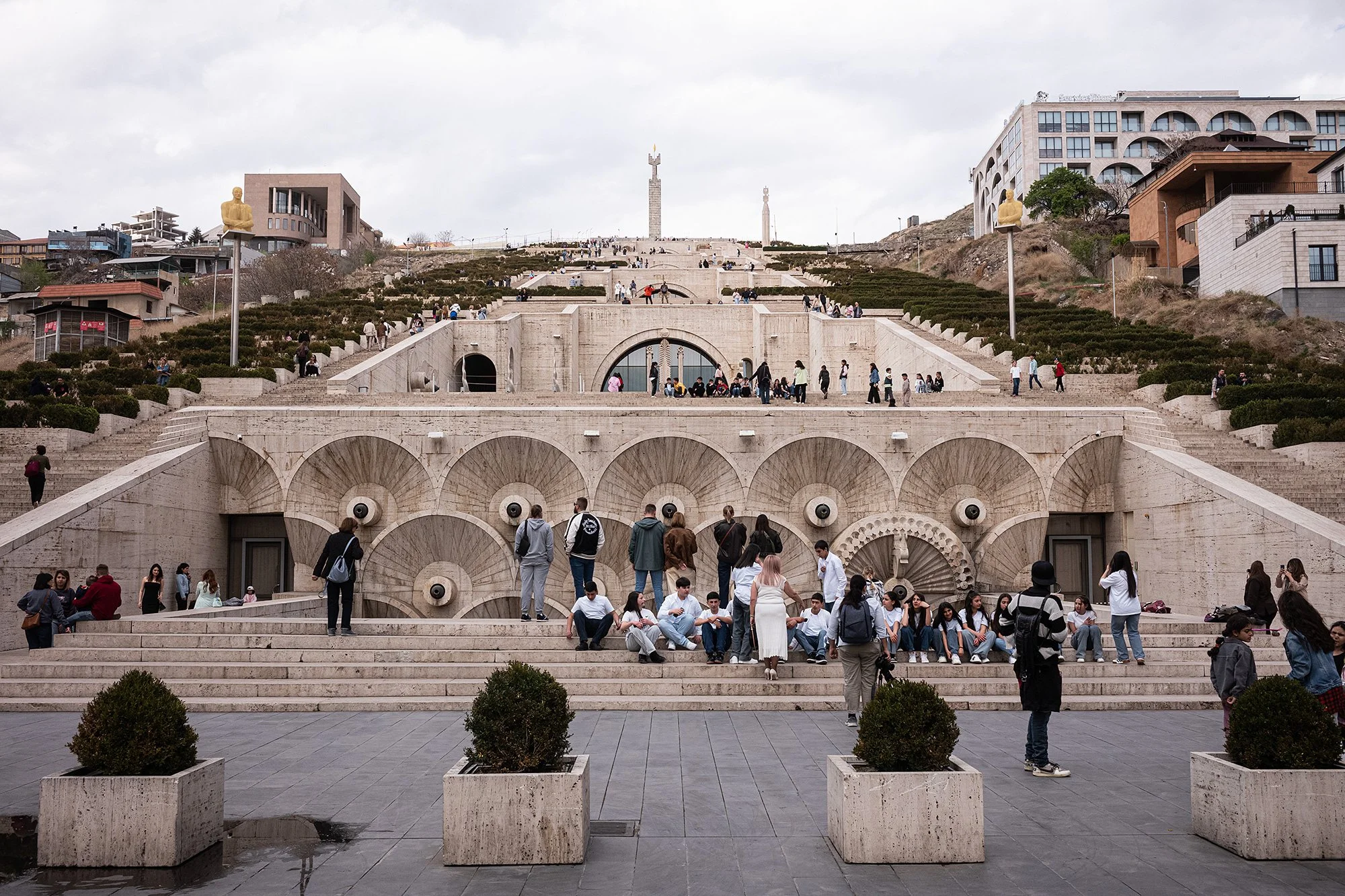


I pause at each landing and fountain to turn and take in my surroundings, watching as tourists and locals alike do the same. I take photos for people and photos of the scenes around me, happy to contribute to the life swirling around us all.






At the top of the Cascade Complex I turn to admire the horizon. The summit of Mt. Ararat can barely be discerned through the clouds; Little Ararat peeks through the haze. I remember hearing of Ararat while visiting the ruins in Ani—a medieval Armenian city in western Turkey—and hearing about this biblical mountain upon which it is said Noan landed his ark after the floods. From where I stand it’s impossible to know for certain.

Behind me another set of stairs skirts around a constricution zone leading up to the memorial. I see small groups of people wander in and out of a small opening that grants access to the stairs and I follow a set of people through and then up.




At the top I can see Victory Park and the Mother Armenia Monument. I debate walking over, but my feet are sore and I’m hot and tired. I walk past the Cascade Memorial to the Victims of Soviet Repression where people are sitting on the steps in the shade of the monument. A dog confines itself to the shade as well, wandering listlessly as it seeks a place to rest.




Looking at the time, I debate what to do. It feels too early to return home and yet I’m loathe to continue walking for the time being. Checking the map, I decide to visit the Tsitsernakaberd Armenian Genocide Memorial Complex. I had planned on walking to it later in the week, but its location and the absence of other attractions nearby convince me to visit it today by taxi. I open an app and hail one and wait under the shade of a tree for it to arrive.

The Tsitsernakaberd Armenian Genocide Memorial Complex is dedicated to the victims of the genocide prepetrated by the Ottoman Empire during the first World War. A 44-meter tall stele symbolizes the national rebirth of Armenians. Twelve slabs placed in a circle represent the twelve lost provinces in present-day Turkey. Within their bounds burns an eternal flame.



Arriving at the memorial I visit the museum first, being advised to do so before it closes. I walk through the halls, chilled at the end by a question posed by Adolf Hitler in 1939 when writing about his decision to attack Poland. “Who, after all, speaks today of the annihilation of the Armenians?”

An atrium within the museum complex stone slabs carved with quotations related to the genocide by Henry Morgenthau Sr. (U.S. Ambassador to the Ottoman Empire). Anatole France, Fridtjof Nansen, Jacques de Morgan, Valery Brusov, and Fayez El Ghuseyn. A child traces a route counter-clockwise, running his hands upon the names etched into the stone; his father stands still, reading the inscriptions.


Outside, I walk to the memorial itself, first walking around the twelve stone slabs before walking between two to approach the eternam flame. Fresh flowers are arranged around it, and I spend some time in quiet contemplation before a family arrives along with a few other small groups. I help a couple with a photo before I take my leave.





I walk from the memorial through a park, past one restaurant before reaching a retro-futuristic building that houses the Livingston Restaurant and the Sport/Concert Complex after Karen Demirtchian. The restaurant intrigues me. Accessed by a glass elevator, the dining room seems to consist of glass pods overlooking the park. For some reason I picture the Rainbow Room in New York, but I am underdressed and in want of a shower.

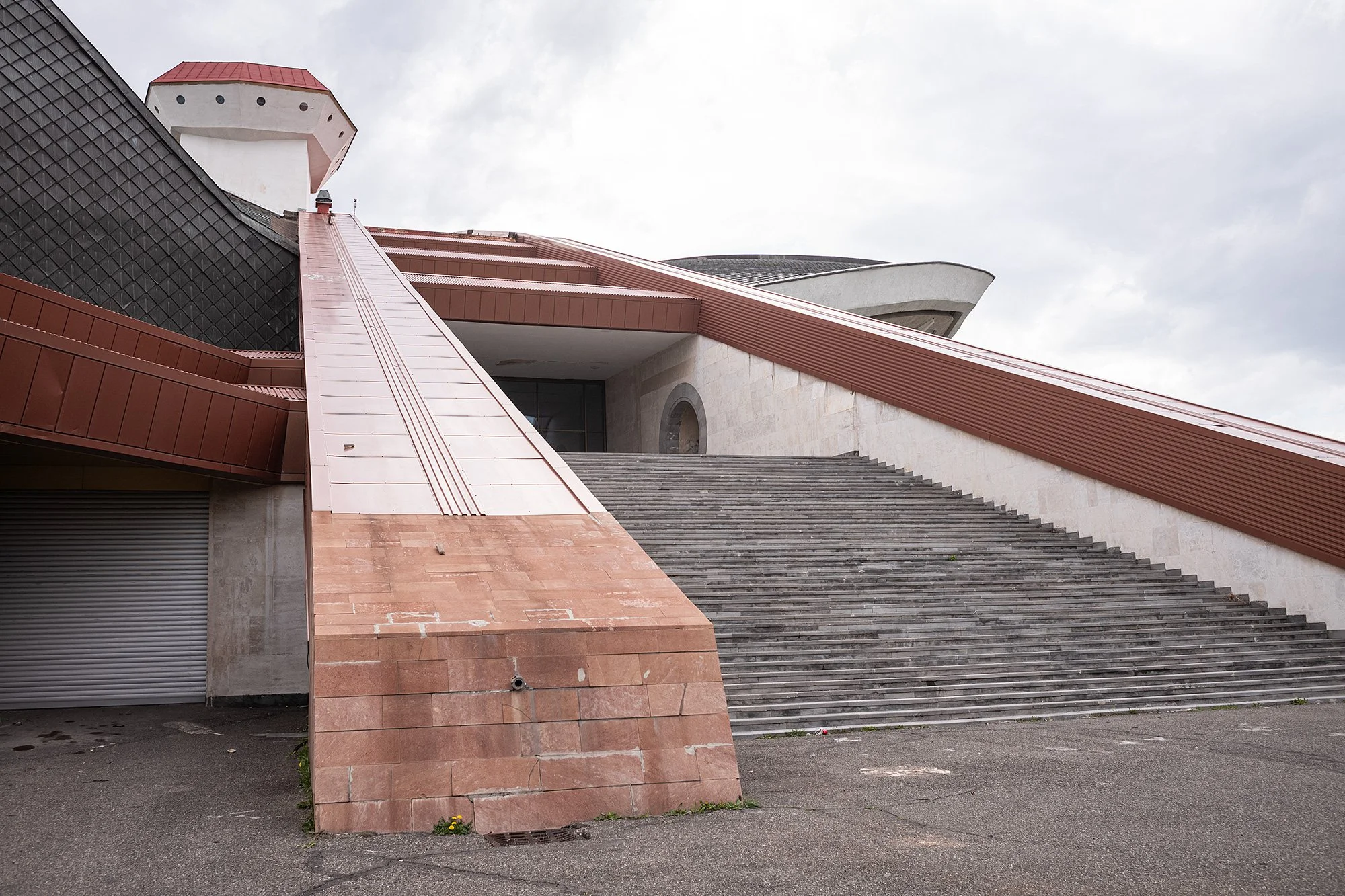

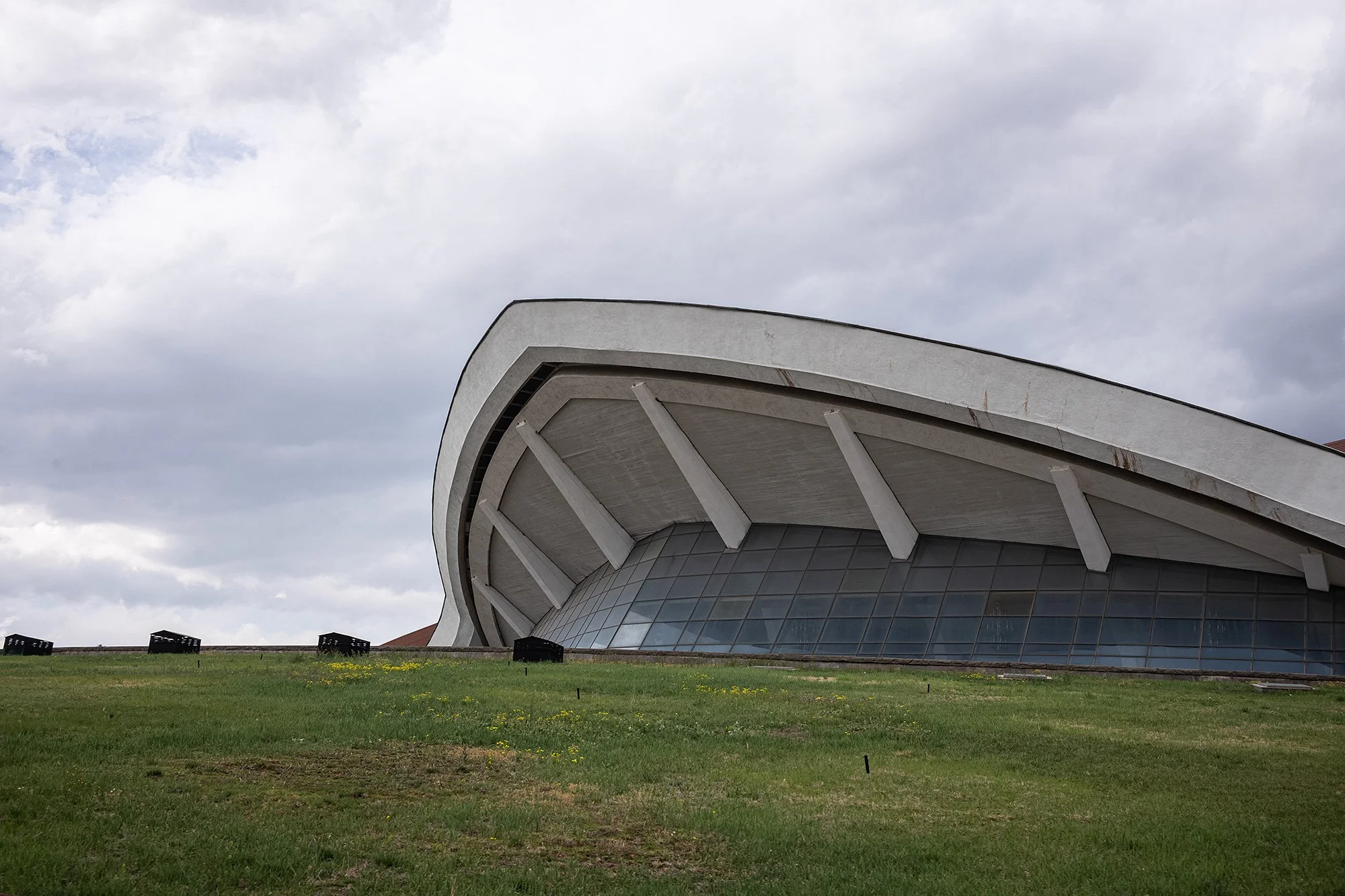
Reaching the road, I open an app on my phone and call cab. It arrives shortly and I’m soon being whisked once again through the streets towards home, Yerevan speeding past the windows. 🇦🇲

